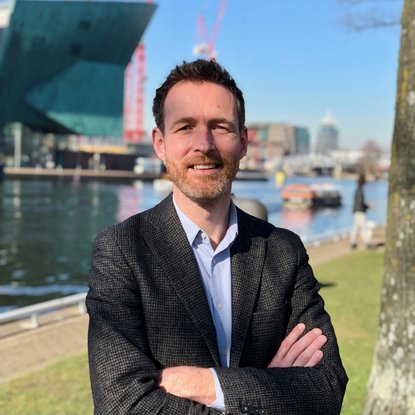Roboat is developing an autonomous fleet for Amsterdam, and as part of the project, scientists, designers, city officials, and residents are invited to think creatively and critically what Roboat can bring to the city. However, it is difficult to assess the impacts or to explore the full range of possibilities. VR can be used to enrich the toolkit of both researchers and designers.
In ideation and design processes you can use low-fi tooling such as prototyping, renders and artist impressions or more advanced tooling such as 2D or 3D modelling to show the anticipated outcome of a project. But often – especially for non-planners – it can still be hard to grasp how something would truly work in practise. This impacts sentiment and perspective on a prototype.
“Currently VR is still the brick Motorola, still an imperfect device, but it provides means that you can’t recreate with other tooling. At this early stage students and designers can help invent the ‘language’ and help develop VR into a next generation human interface.”
Ricardo Alvarez, Researcher at MIT
VR is communication through emersion. The MIT researchers developed a VR environment that engaged users in the design of urban interfaces and services for autonomous boats. Surrounded by this environment, the MSc MADE students truly experienced how Roboat could function in the Amsterdam canals. Because of the more natural experience, it tapped into their sentiments and enriched feedback loops to test and further develop Roboat prototypes and use cases.
Without boundaries or limitations, the students came up with ideas on how to combat climate change, develop on-demand toilets, create new and flexible public space or use Roboat units to function as a temporary exhibition space. A great exercise to develop some experience in using VR tools for design and (urban) planning.
“VR doesn’t change the need for a blanc sheet of paper and a pencil, but it enhances the social approach of design. Using VR you can become more efficient in communicating and bridging the gap of design and the real-life result. In the design process VR can improve feedback loops.”
